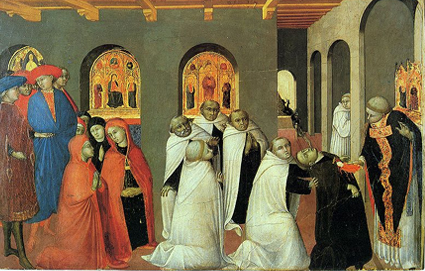Religious paintings are usually denatured when they end up in museums, places that inevitably turn them into things which they were not originally intended to be. The museum tacitly transforms the religious painting into an object of aesthetic contemplation and art historical classification, rather than an injunction to the faithful. It becomes something to be admired for its formal qualities, to be retrospectively slotted into a school or a movement. It becomes a link in the chain of art history, too easily seen as an echo or a prophecy of other paintings, rather than a thing made to move, stun or astonish particular people in a particular place at a particular time.
Reading the catalogue to ''European paintings from the Bowes Museum'', a sporadically wonderful exhibition of pictures currently on loan to the National Gallery from one of Britain's lesser known provincial art galleries, you are informed that exhibit number one, an early 15th-century predella painting of A Miracle of the Eucharist by Sassetta, demonstrates that ''his contribution to Sienese art lies principally in his convincing, though mathematically imperfect, construction of inner space'' and in a ''unity of composition created by the skilful grouping of the figures''. This does less than justice to the ferocious piety of Sassetta's painting, its extraordinary marriage of righteousness and violence, and what must once have been the terrifying nature of its appeal to the lay Catholic imagination. This is a painting that is too fierce to be tamed, to be domesticated or secularised, and its message is unambiguous. Forget art history, forget composition and perspective and the skilful grouping of figures. Sassetta's picture is not really even a work of art, in the modern sense, it is a threat: believe, or burn in hell for ever.
A Miracle of the Eucharist is...

Believe, or burn in hell for ever and ever
11-05-1993

